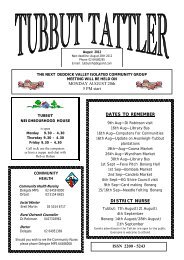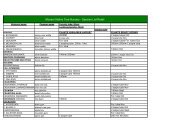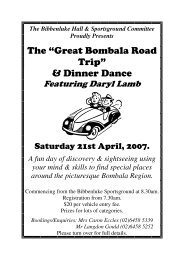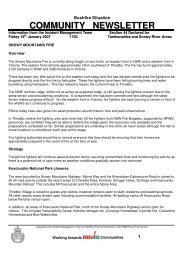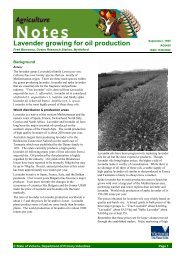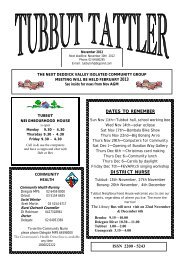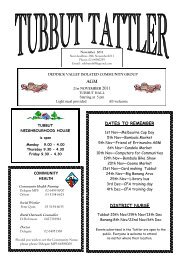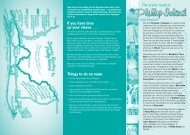Weed Detection and Control on Small Farms - University of New ...
Weed Detection and Control on Small Farms - University of New ...
Weed Detection and Control on Small Farms - University of New ...
You also want an ePaper? Increase the reach of your titles
YUMPU automatically turns print PDFs into web optimized ePapers that Google loves.
How do I collect <str<strong>on</strong>g>and</str<strong>on</strong>g> preserve a weed specimen<br />
for identificati<strong>on</strong>?<br />
For proper identificati<strong>on</strong>, a flower or other reproductive part <strong>of</strong> the plant,<br />
for example, a fruit that c<strong>on</strong>tains the seed, is almost always required. You<br />
should therefore aim to collect <strong>on</strong>e or two plants that have these ‘structures’<br />
<strong>on</strong> them to take to your local weeds pr<strong>of</strong>essi<strong>on</strong>al for identificati<strong>on</strong>. For<br />
large weeds, <strong>on</strong>ly part <strong>of</strong> the plant needs to be collected, as l<strong>on</strong>g as it<br />
c<strong>on</strong>tains all the types <strong>of</strong> structures <strong>of</strong> the plant, for example, leaves, stems,<br />
flowers <str<strong>on</strong>g>and</str<strong>on</strong>g> fruit. Storing the plant in a sealed plastic bag in a cool place<br />
out <strong>of</strong> the sun or in the fridge will keep it fresh for a day or two for ease <strong>of</strong><br />
identificati<strong>on</strong>, <str<strong>on</strong>g>and</str<strong>on</strong>g> also eliminate the chance <strong>of</strong> seed spread.<br />
Where the time between collecti<strong>on</strong> <str<strong>on</strong>g>and</str<strong>on</strong>g> identificati<strong>on</strong> is likely to be l<strong>on</strong>ger<br />
than a day, plants may need to be preserved in their original state by<br />
immediately pressing <str<strong>on</strong>g>and</str<strong>on</strong>g> drying them between sheets <strong>of</strong> newspaper (4<br />
or 5 at least <strong>on</strong> each side), with a heavy object <strong>on</strong> top. It is important to<br />
change the newspaper every couple <strong>of</strong> days until the specimen is dried.<br />
The flattened <str<strong>on</strong>g>and</str<strong>on</strong>g> dried specimen can then be taken for identificati<strong>on</strong> as is,<br />
or taped to a piece <strong>of</strong> stiff paper or cardboard for easier display.<br />
Digital photographs can also be taken <strong>of</strong> your unknown plant <str<strong>on</strong>g>and</str<strong>on</strong>g> shown<br />
or emailed to your weeds <strong>of</strong>ficer for identificati<strong>on</strong>. However, these need<br />
to include close-ups <strong>of</strong> all the parts as well as images <strong>of</strong> the whole plant.<br />
Photographs may also be preferable over a plant specimen when there is<br />
<strong>on</strong>ly <strong>on</strong>e plant in the field (it could be a rare native species that requires<br />
protecti<strong>on</strong>) or when the weeds are seeding <str<strong>on</strong>g>and</str<strong>on</strong>g> there is a chance <strong>of</strong> weed<br />
spread if the plant is moved.<br />
12




